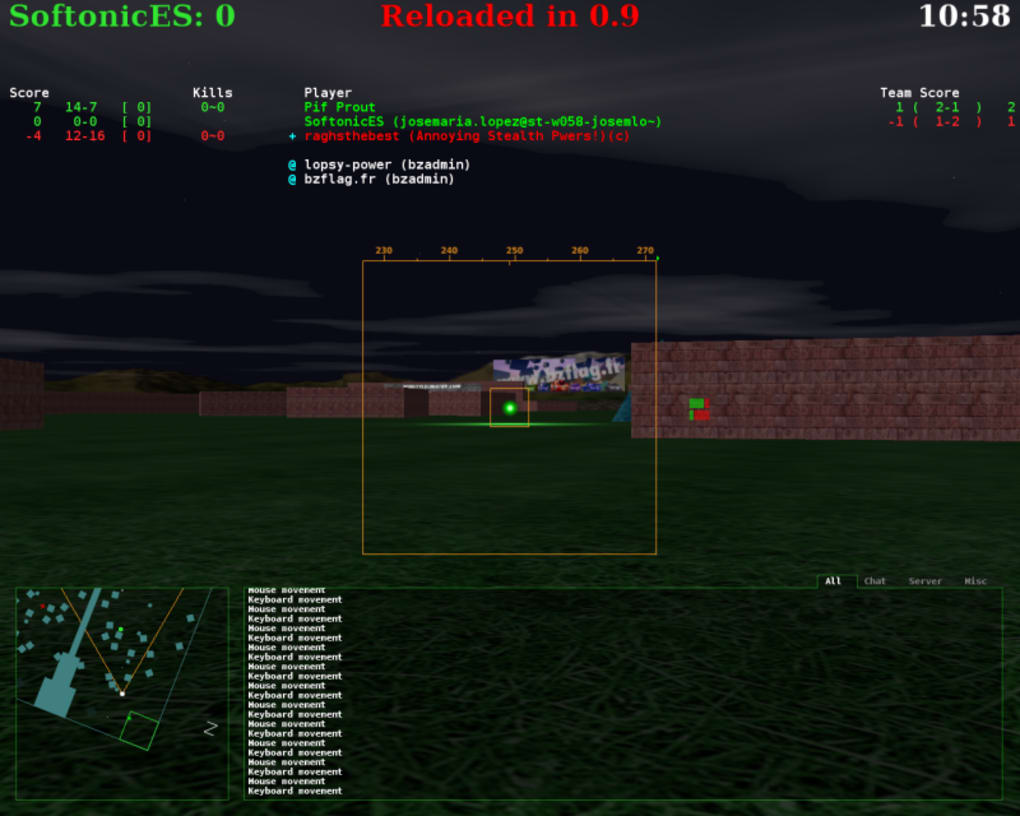

- #BZFLAG BAMBINO HOW TO#
- #BZFLAG BAMBINO VERIFICATION#
- #BZFLAG BAMBINO SOFTWARE#
- #BZFLAG BAMBINO LICENSE#
#BZFLAG BAMBINO LICENSE#
Wines and spirits are sold by KSSWINE LLC, d/b/a Parcelle Wines, License #1302013, 509-511 W38TH ST, NY, NY 10018.Your credit card will be charged separately for wine and liquor under "Parecell Wines LLC".Parcelle Wines LLC, and Baldor Transportation LLC are separate companies.Restocking charges of 15% of your order may also apply. If proper identification is not available at the time of delivery, your delivery will be refused and you will be charged a delivery attempt fee of $5.95.
#BZFLAG BAMBINO VERIFICATION#
The person receiving the delivery must present proper age verification and will be required to sign. You must be 21 years of age to order wine or liquor.Purchases from Parcelle Wine are subject to the following terms and conditions: We are certain that you’ll find this collection to fit any occasion you may have. Our selection of wines are curated by Parcelle Wines in New York City. We’ll build the model to handle either terminator.Wine and Liquor - Provided by Parcelle Wine. It’s not clear what terminates the server hello the protocol page says 0xFF, but the network capture shows a 0x00. The server responds with a hello message containing a four-digit version number. This is simple to model in BNF: CR = 0x0D # US-ASCII CR, carriage return (13) The client hello is simply the string “BZFLAG” followed by two sets of carriage return and line feed. After the client establishes a TCP connection to the server, it sends a client hello message and expects a server hello in response. Here is part of a conversation between a client (red) and a server (blue): However, between this page and a capture of actual network traffic, we have enough information to model part of the protocol with the Defensics SDK. The protocol is documented on a page that loudly proclaims its own inaccuracy. We won’t worry about the UDP messages during gameplay but will instead focus on the TCP-based negotiation when BZFlag clients join a server. Instead, we will focus on how the clients and game server communicate: via a proprietary network protocol carried on top of standard TCP connections and UDP datagrams. Our investigation here is not about application design vulnerabilities. By modifying the source code, it is possible to create tanks that never die, tanks that hop like frogs, and more. Obviously, modified BZFlag clients can cheat widely and creatively. For example, the BZFlag client is responsible for reporting when it has been hit by a bullet and has blown up. In particular, BZFlag clients are given much of the power in determining the course of gameplay. It is well known that BZFlag has serious security flaws in its design. BZFlag supports multiplayer games, where all players connect to a central server, bzfs.
#BZFLAG BAMBINO SOFTWARE#
Our target: bzfsįor this example, our target software will be the server component of an open source tank battle game, BZFlag.
#BZFLAG BAMBINO HOW TO#
This article will highlight how to start modeling a custom protocol. For that information, consult the documentation. I won’t cover the basics of setting up and using the Defensics SDK. In this article, I’ll walk through how easy it is to create such a test suite.

Regardless, the Defensics SDK allows you to harness the power of Defensics to create test suites for any type of data. Maybe it is a proprietary protocol or something relatively obscure. It’s like one of those expansive diner menus where you can order everything from scrambled eggs to moo shu pork.Įven so, you will sometimes have to test a piece of software that Defensics does not already have an appropriate test suite for. Luckily, Defensics already has an impressive array of prebuilt test suites, more than 250 of them, that cover many common network protocols and file formats. The disadvantage of generational fuzzing is that somebody has to create the data model for the inputs you are fuzzing. Subjectively speaking, the test cases have high quality. This technique is highly effective in burrowing into different control paths in the target and revealing vulnerabilities. The result: test cases that are very realistic but messed up in some way. GMManBZFlag Using the same firmware directly is probably not possible because of changes in ROM (that is actually read-only and not just flash), but it can be approximated. In this article, we demonstrate how to start modeling a custom protocol.ĭefensics is a generational fuzzer, which means it creates test cases based on a detailed model of the input data. With the Defensics SDK, you can create fuzzing test suites for any type of data.


 0 kommentar(er)
0 kommentar(er)
